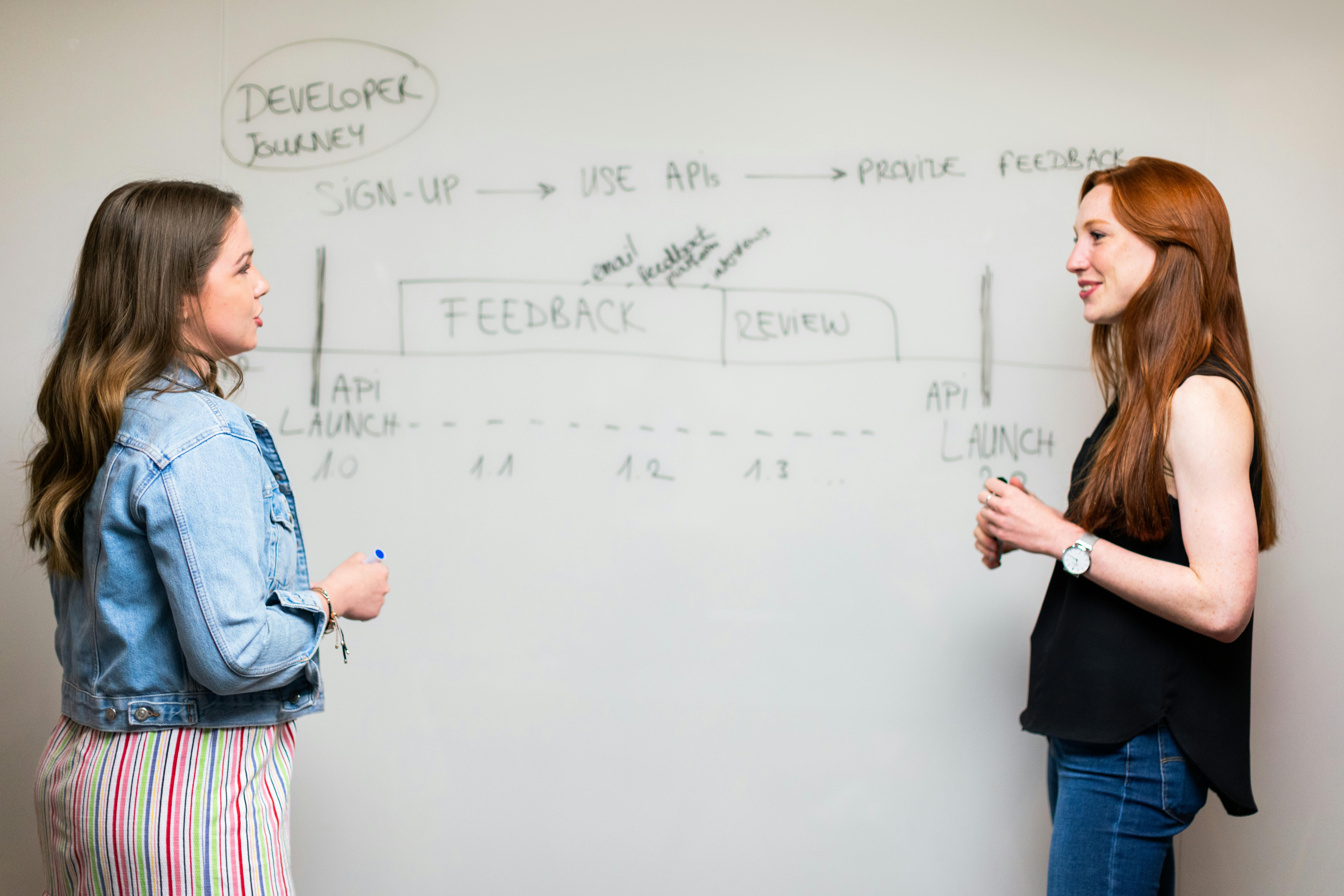THIS IS WHERE THE MAGIC HAPPENS.
Insightful tips, in-depth guides, and essential resources to help you streamline your business operations and enhance efficiency, so you can focus on what truly matters!
THIS IS WHERE THE MAGIC HAPPENS.
Insightful tips, in-depth guides, and essential resources to help you streamline your business operations and enhance efficiency, so you can focus on what truly matters!
Stay Connected and Simplify Your Business!
Sign up to be on our blog/newsletter list and get easy tips, tools, and strategies to help your business grow—delivered straight to your inbox.
Join today and start making business easier!

Sales Pipelines: What Are They & How They Help You Hit Your Business Goals
As a service focused business owner, you're great at transforming lives and providing support – but turning interested prospects into paying clients can feel like a head-scratching mystery.
Enter the sales pipeline! A defined pipeline is your roadmap to consistently converting prospects into clients while maintaining authentic and honest connections.
Think of a sales pipeline as your client's journey from first discovering you to becoming a happy, paying client.
When structured correctly, it takes the guesswork out of sales and helps you understand exactly where each potential client stands in their journey with you.
A Quick Overview of Sales Pipelines
What Exactly is a Sales Pipeline?
A sales pipeline is a visual representation of where your potential clients are in their buying journey. Unlike a sales funnel, which focuses on numbers and conversion rates, a pipeline helps you track and nurture individual relationships.
Key Stages in a Basic Pipeline:
1. Awareness: When potential clients first discover you
2. Interest: Initial engagement with your content or offers
3. Evaluation: Considering working with you
4. Decision: Choosing to move forward (or not)
5. Action: Becoming a client
How Pipelines Are Different From Funnels:
• Pipelines focus on relationships and progress
• Funnels focus on volume and conversions
• Pipelines are more personal and flexible
• Funnels are more numbers-driven
Why Pipelines Matter for Service-Based Businesses:
• Track potential client progress
• Identify where people might be getting stuck
• Plan appropriate follow-up actions
• Maintain consistent communication
• Predict future revenue more accurately
Remember, your pipeline isn't just about tracking sales – it's about understanding and supporting your potential clients' journey to working with you. When you know at which stage you may be losing prospective clients, you can make necessary changes.
And on the other hand, when you know what is working in moving those potential clients forward, you can integrate language, messaging and tactics into other stages.

Essential Pipeline Stages for Service Based Businesses
To better understand, and start to build your own pipeline, let's break down each stage. We’ll look at what happens at each step, content to use in that step and how they work together.
Awareness/Lead Generation
• How prospects find you initially
• Content marketing and social media presence
• Referrals and word of mouth
• Lead magnet downloads
• Workshop or webinar attendees
Initial Contact/Discovery
• First direct interaction
• Email sequences begin
• Social media engagement
• Newsletter subscription
• Free resource downloads
Consultation/Assessment
• Discovery calls
• Strategy sessions
• Initial assessments
• Needs analysis
• Value demonstration
Proposal/Offer
• Package presentation
• Program recommendations
• Pricing discussions
• Value articulation
• Answering questions
Follow-up and Conversion
• Addressing concerns
• Additional value provision
• Payment arrangements
• Contract signing
• Welcome and onboarding
Setting Up Your Pipeline
Now that you understand the stages, let’s put it together for your business!;
There will be a few pre-pipeline exercises to help you create the most specific and supportive flow for your dream client.
1. Identifying Your Ideal Client Journey
• Map out how clients typically find you
• Note common questions and concerns
• Track decision-making timeframes
• Identify key decision points
2. Mapping Touchpoints
• Welcome emails
• Follow-up sequences
• Check-in messages
• Value-adding content
• Personal outreach
3. Creating Automation Triggers
• Initial contact responses
• Follow-up reminders
• Content delivery
• Booking confirmations
• Payment processing
4. Establishing Tracking Metrics
• Number of leads at each stage
• Time spent in each stage
• Conversion rates between stages
• Follow-up effectiveness
• Overall pipeline health
Pro Tip: Start simple and refine as you learn what works best for your unique business and clients. Your pipeline should evolve with your business.
Using Your Pipeline to Reach Business Goals
An effective pipeline is not just well built and well organized, it’s focused on reaching your business goals! Create your pipeline with a clear objective in mind, this will serve as your “north star” as you plan and build out your flow.
Here's how to make your pipeline work for you:
Setting Realistic Targets
We love big, hairy goals but when creating a specific service/product sales pipeline keep your goals realistic and achievable. Take the time to understand where you’re starting and where you’d like to go based on current stats.
• Review your current conversion rates
• Set goals for each pipeline stage
• Calculate needed leads for desired income
• Create monthly and quarterly objectives
Tracking Conversion Rates
One of the powers of a strategic pipeline is the data it provides you. This data allows you to better plan, and make adjustments, to other pipelines and funnels.
• Monitor transitions between stages
• Identify where prospects get stuck
• Calculate ROI for marketing efforts
• Adjust strategies based on data
Identifying Bottlenecks
A bottleneck in your pipeline is a point where prospective clients tend to stall or drop off. Having your pipeline automated allows you to clearly identify these points.
• Where do prospects stall?
• Which stages need more attention?
• What feedback are you receiving?
• Where can you improve communication?
Optimizing Each Stage
Once you know your goals and have a plan to reach them, you will optimize each stage of your pipeline so it’s focused on that exact goal. This allows you to:
• Test different approaches
• Refine your messaging
• Improve follow-up timing
• Enhance value delivery
Automating Your Pipeline
Now comes the superpower boost for your sales pipeline! Automation makes your pipeline manageable, consistent and working in the background for you. However, you can do all this hands-off automation without losing the personal, authentic touch you need in your marketing and messaging.
Here’s how you can automate and make sure your prospective clients get the best experience:
Key Automation Opportunities
• Welcome sequences
• Follow-up reminders
• Content delivery
• Appointment scheduling
• Payment processing
Essential Tools and Systems
• CRM system for tracking
• Email marketing platform
• Scheduling software
• Payment processing
• Document signing
Maintaining Personal Touch
• Customize automated messages
• Include personal videos
• Add specific client details
• Balance automation with direct contact
And to do all of that, Automation on a Mission is your all-in-one platform! AOAM allows you to:
• Streamline repetitive tasks
• Track pipeline progress
• Manage follow-ups
• Maintain consistent communication
• Generate reports and insights
Pipeline Management Best Practices & Next Steps
Managing your pipeline well comes down to a few important practices and consistent monitoring and maintenance.
Here's your quick guide to success:
Pipeline Maintenance Best Practices
• Review your pipeline weekly
• Follow up with each new lead within 24-48 hours
• Track all interactions
• Keep notes current
• Update stages promptly
• Clean your pipeline monthly
Common Pipeline Pitfalls to Avoid
• Letting leads go cold
• Inconsistent follow-up
• Skipping pipeline reviews
• Poor data tracking
• Overwhelming your system
Your Next Steps For Your Goal Focused Sales Pipeline:
1. Map out your current client journey
2. Identify key pipeline stages
3. Set up basic tracking system
4. Implement one automation at a time
5. Review and adjust regularly
Ready to transform your sales process with an effective and automated pipeline? Let Automation on a Mission show you how to set up and manage a pipeline that converts while maintaining those honest and authentic connections with your potential clients.
Book your free demo to discover how we can help you build and manage an effective sales pipeline!
Remember: A well-managed pipeline isn't about being pushy – it's about providing the right support at the right time to help potential clients make informed decisions about working with you.
© Copyright 2025. All rights reserved.





